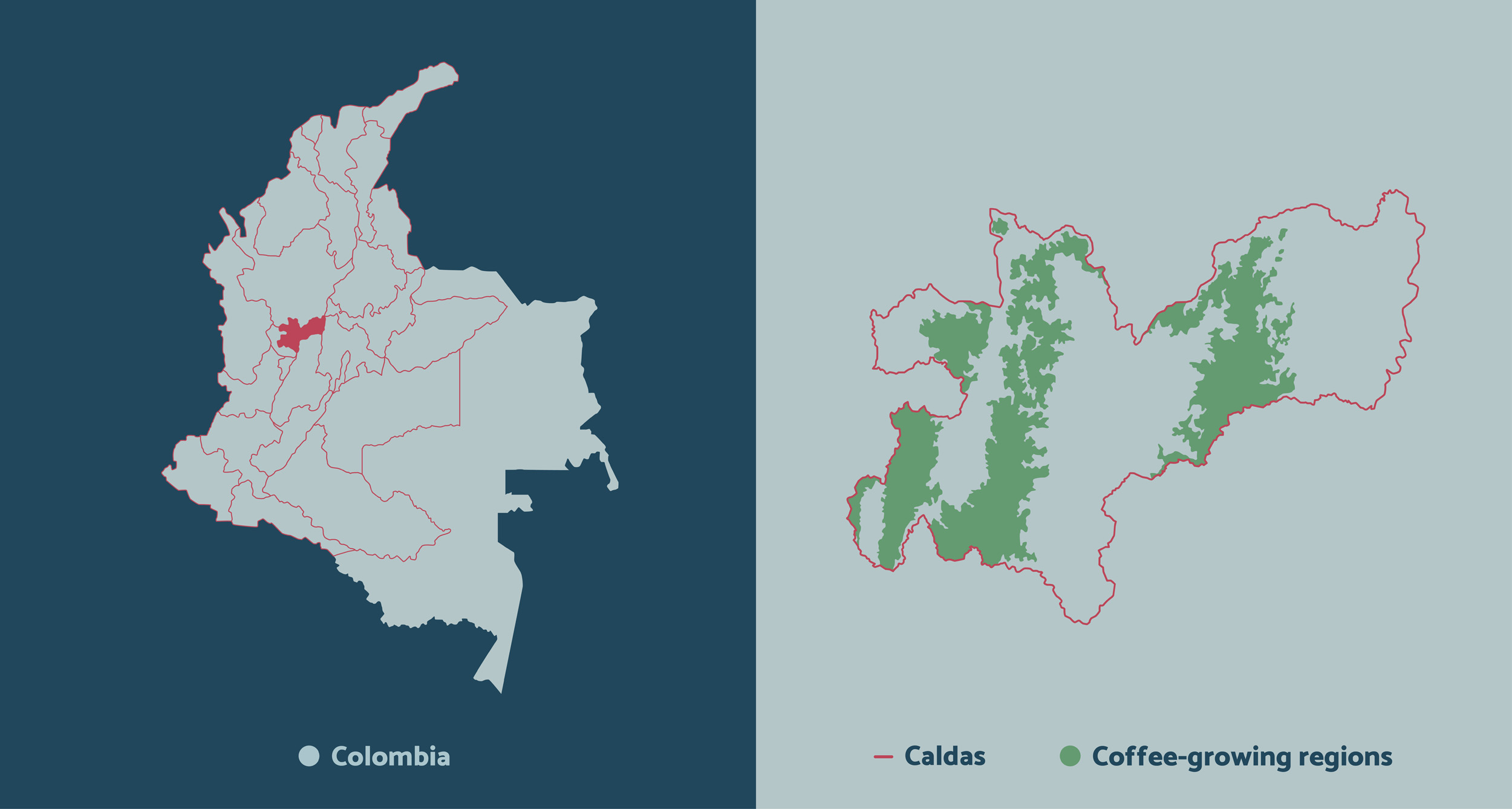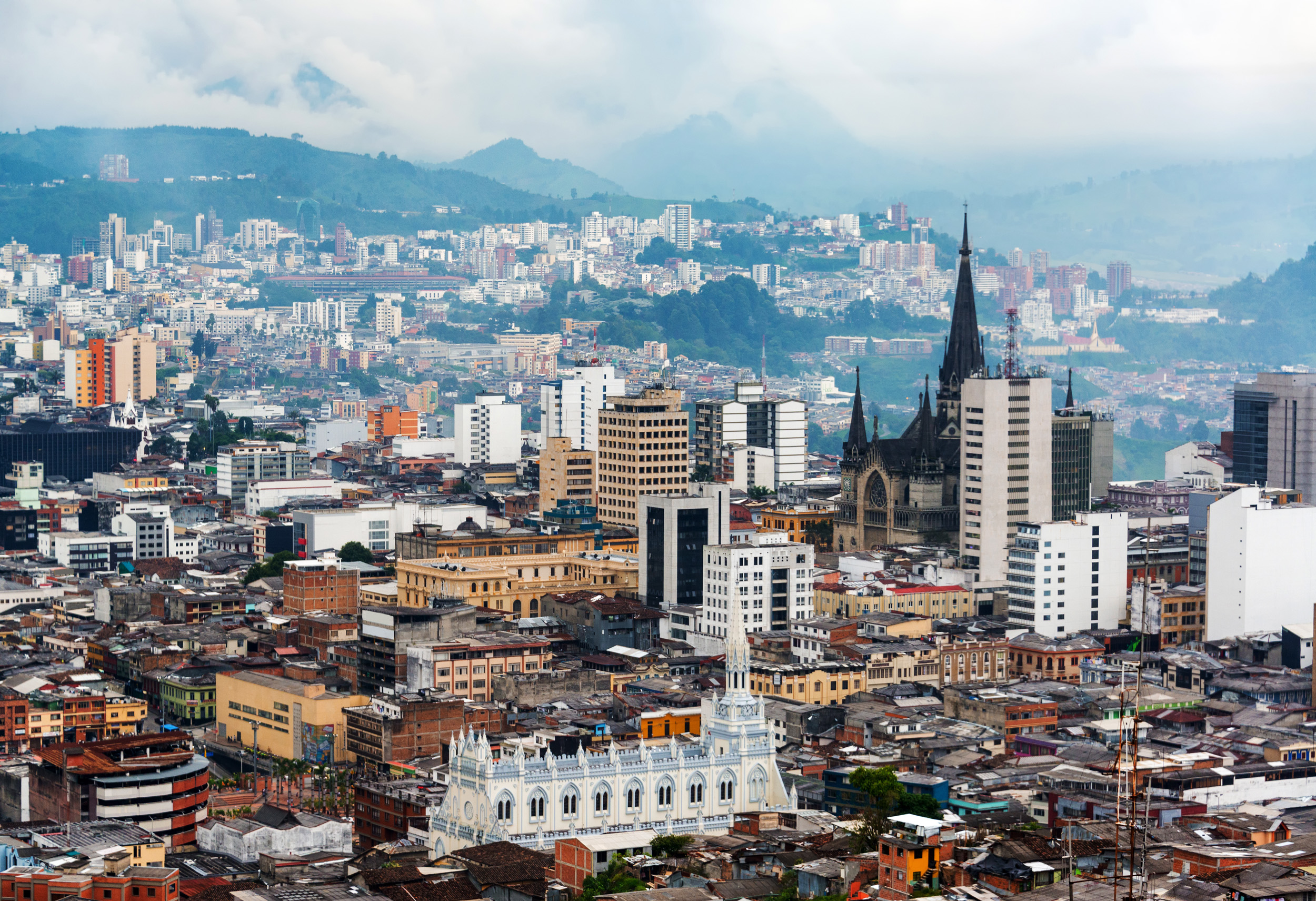Harvest: August–December (main crop), April–May (mitaca)
Elevation: 1,200–2,200 metres (3,900–7,200 feet) above sea level
Rainfall: 2,100–5,500 millimetres (83–217 inches)
Temperature: 13°C–24°C (55°F–75°F)
Caldas makes up the northern part of the Eje Cafetero, Colombia’s historical centre of coffee production. Caldas is sandwiched between Antioquia to the north and Risaralda and Tolima to the south.
The department was created in 1905, from territory that was previously part of Cauca and Antioquia. The original borders also included present-day Quindío and Risaralda, but the latter departments were separated from Caldas in 1965. Confusingly, one of the major coffee-producing municipalities of Caldas, located at the border with Risaralda department, is called Risaralda.
Clockwise from top left: Steep slopes on a coffee plantation near Manizales; Carnival of the Devil in Riosucio; Manizales, Caldas’s capital city.
In the nineteenth century, the economy in the area was based around gold — mining of the ore as well as the looting of indigenous troves. The population grew rapidly in the latter half of the century as settlers arrived from Antioquia in search of gold and new lands to cultivate. The first commercial coffee plantations were established in 1860, and growth of the industry was initially slow (Gordillo 2005).
In the early twentieth century, all of Colombia’s coffee-growing regions underwent a boom in production, but Caldas rapidly became the largest producer in the country. The department (including present-day Quindío and Risaralda) went from producing 199,000 bags of green coffee in 1913 to over a million in 1932 (Ocampo and Botero 2000).
By 1960, more than 220,000 hectares had been planted with coffee in Caldas. The volume of production continued to grow in the following decades with the introduction of the new, high-yielding varieties Caturra and Colombia (Gordillo 2005).
The area under coffee cultivation began decreasing from the 1990s onwards and reached around 60,000 hectares in 2021 (FNC 2022).



